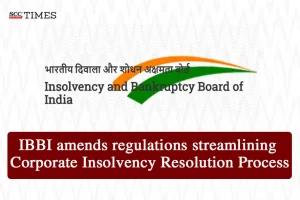On 3-2-2025, the Insolvency and Bankruptcy Board of India notified the Insolvency and Bankruptcy Board of India (Insolvency Resolution Process for Corporate Persons) (Amendment) Regulations, 2025 to amend the Insolvency and Bankruptcy Board of India (Insolvency Resolution Process for Corporate Persons) Regulations, 2016. The provisions came into force on 3-2-2025.
Key Points:
-
Regulation 4-E has been introduced relating to Handling over the possession:
-
Resolution Professional (‘RP’) will have to obtain 66% of total votes of the committee;
-
Only after attaining the required votes, RP will hand over the possession of the plot, apartment, or building or any instruments which was to be transferred.
-
-
Chapter V relating to “Committee of Creditors” has been revised introducing a new Regulation 16-C which relates to Appointment of facilitators:
-
In case number of creditors in a class exceeds 1000- committee can direct the interim RP/ RP to appoint an insolvency professional other than interim RP/ RP/ authorized representatives as Facilitator for a sub-class within creditors in a class:
-
Facilitator will be appointed by the committee only if a sub- class compromising of at least 100 creditors out of total number of creditors in a class, request for inclusion of an agenda for such appointment and also propose the name for such appointment;
-
There can only be 5 facilitators at max;
-
Fee for facilitator for ech sub-class will be 20% of the fees specified for authorized representative;
-
This fee will be a part of the insolvency resolution process cost.
-
-
Facilitator can be replaced by the committee on the recommendation of the majority of members of the sub-class.
-
-
Newly introduced Regulation 16-D talks about the Duties and responsibilities of the facilitator:
-
Facilitate communication between authorized representative and the creditors of the sub-class;
-
Attend meetings of the committee, as observers, to facilitate communication between creditors of the respective sub-class;
-
Provide information and clarifications to the creditors in a sub-class about the insolvency resolution process;
-
Perform any other task given by the committee to improve representation and communication.
-
-
Regulation 18 relating to Meetings of the committee has been revised introducing a new provision which specifies that if the corporate debtor has any real estate project, the committee can direst the RP to invite the Competent Authority to attend meetings of the committee to provide inputs on matters associated with development of projects.
-
Regulation 30-C has been introduced under the chapter relating to Conduct of Corporate Insolvency Resolution Process which talks about the Report on the status of development rights and permissions of real estate projects:
-
RP will have to:
-
Prepare a report detailing the status of development rights and permissions required for development of such project;
-
submit the report to the committee for its comments;
-
Submit the report and comments to the Adjudicating Authority on / before 60th day from the insolvency commencement date.
-
-
Note: “competent authority” under Real Estate (Regulation and Development) Act, 2016 means the local authority or any authority created or established under any law for the time being in force by the appropriate Government which exercises authority over land under its jurisdiction and has powers to give permission for development of such immovable property.

